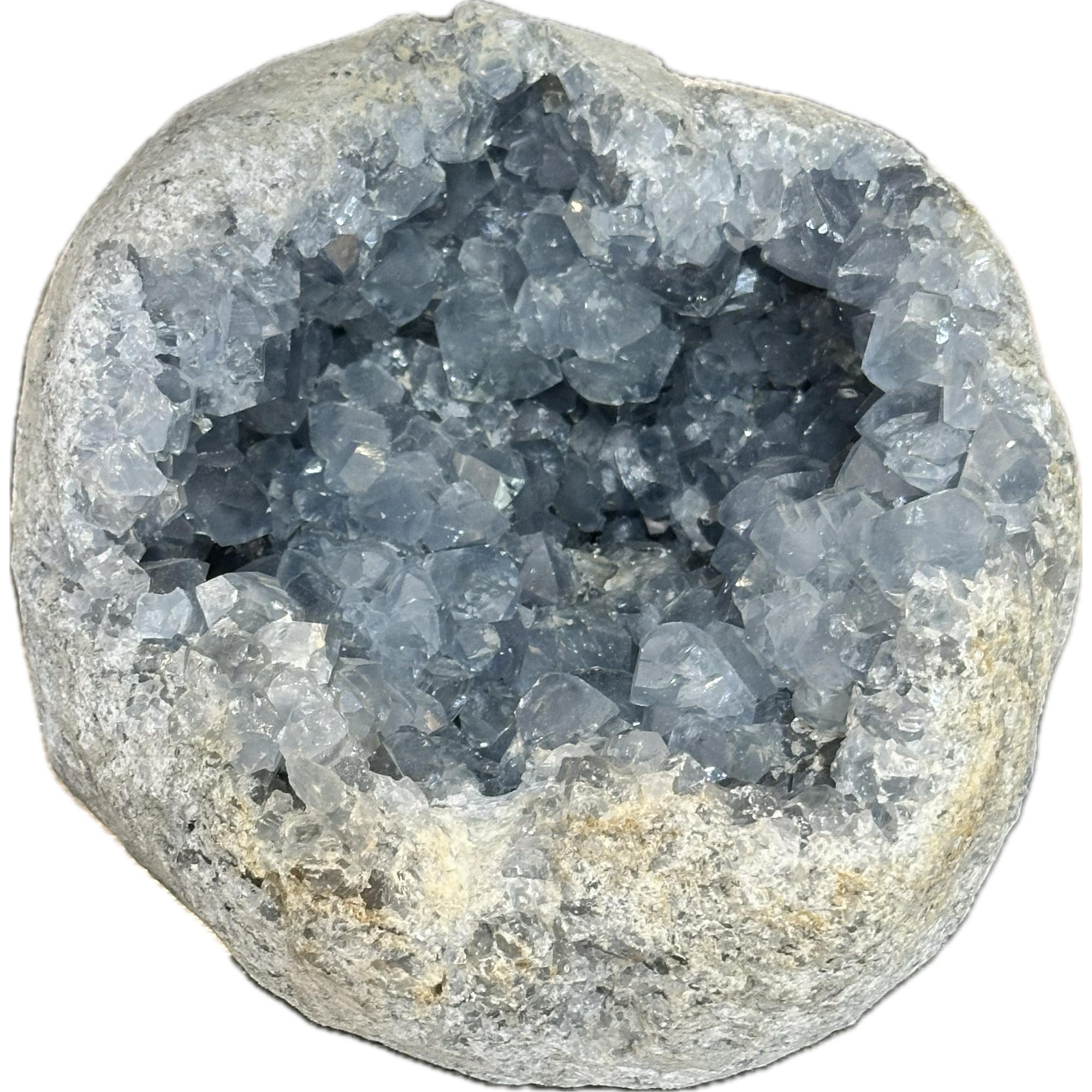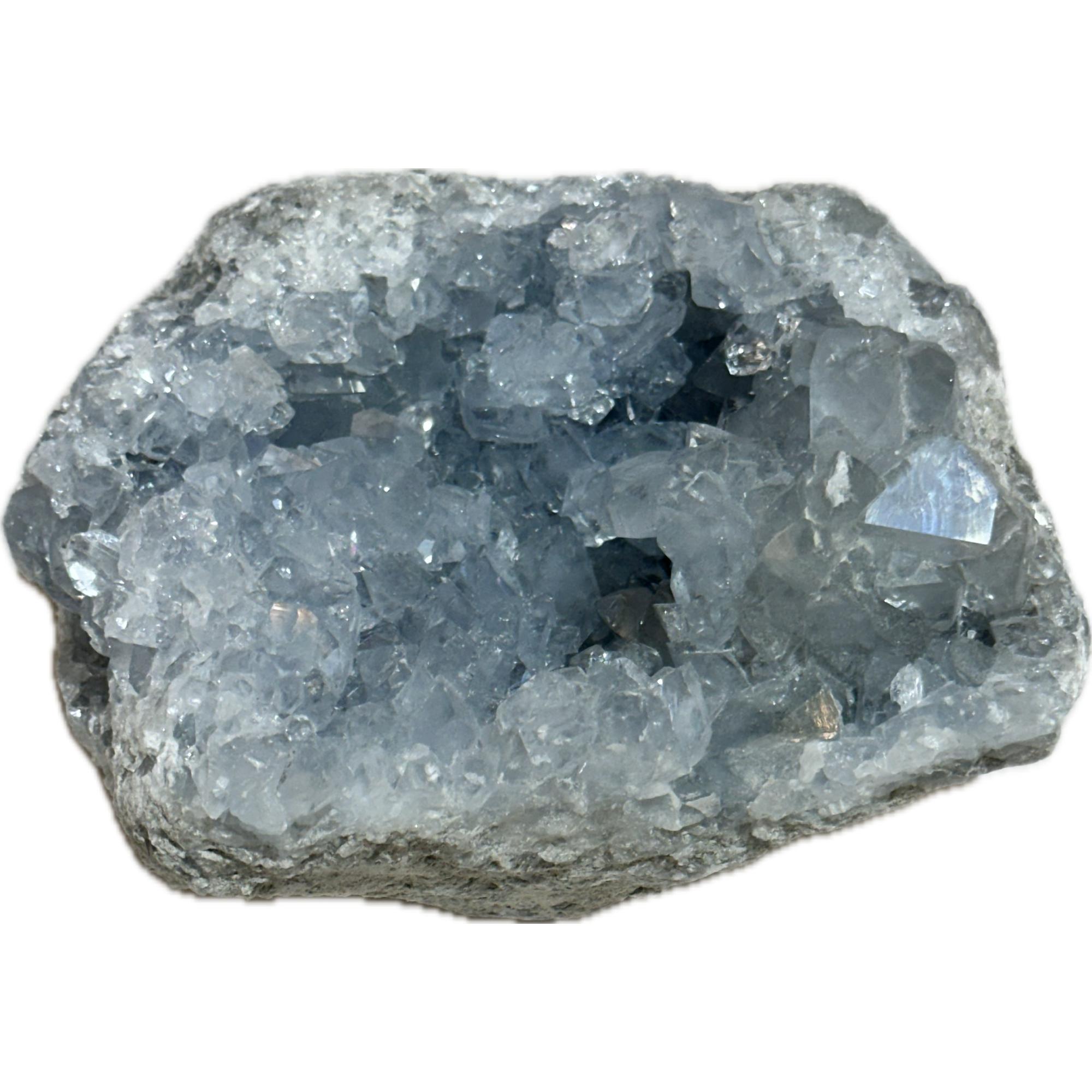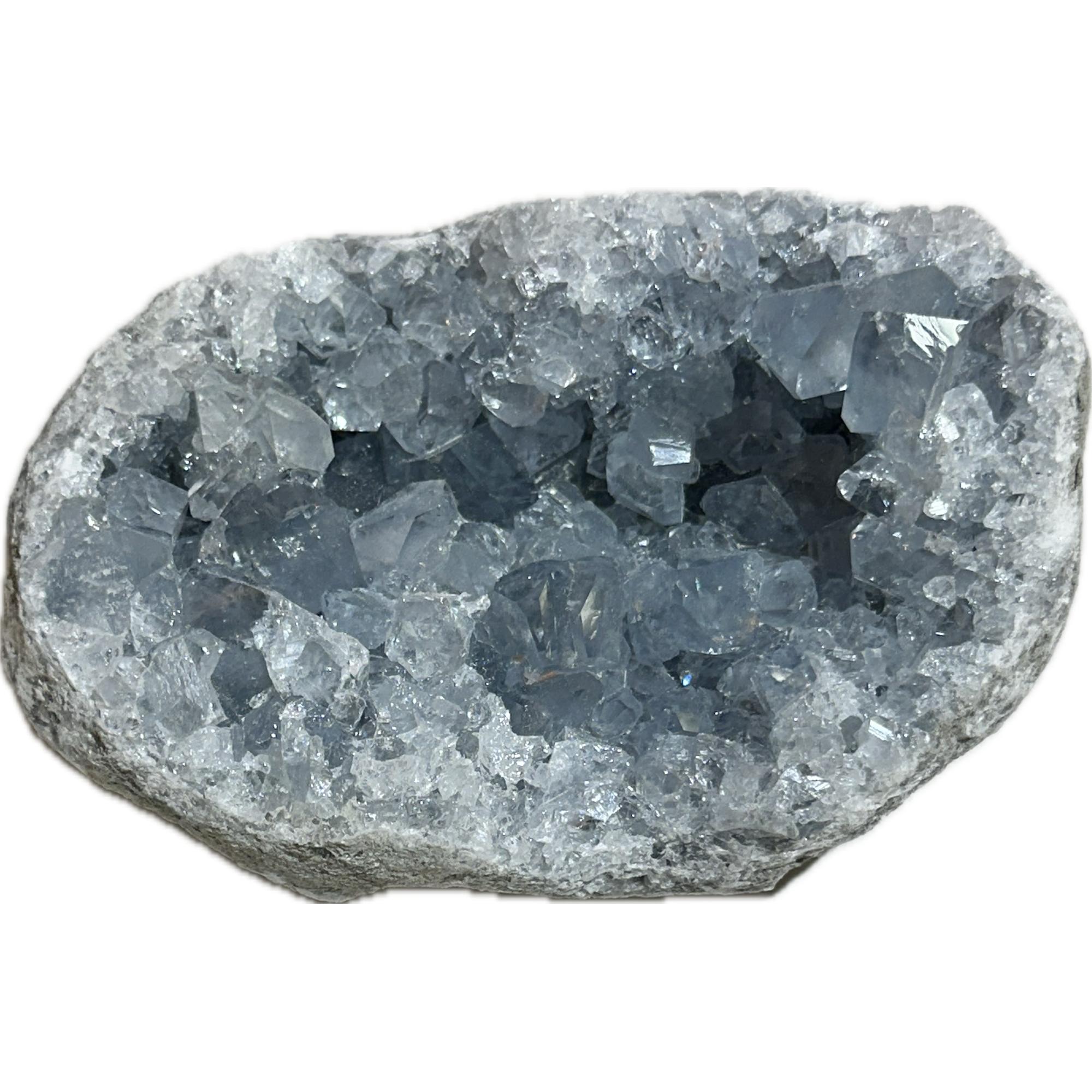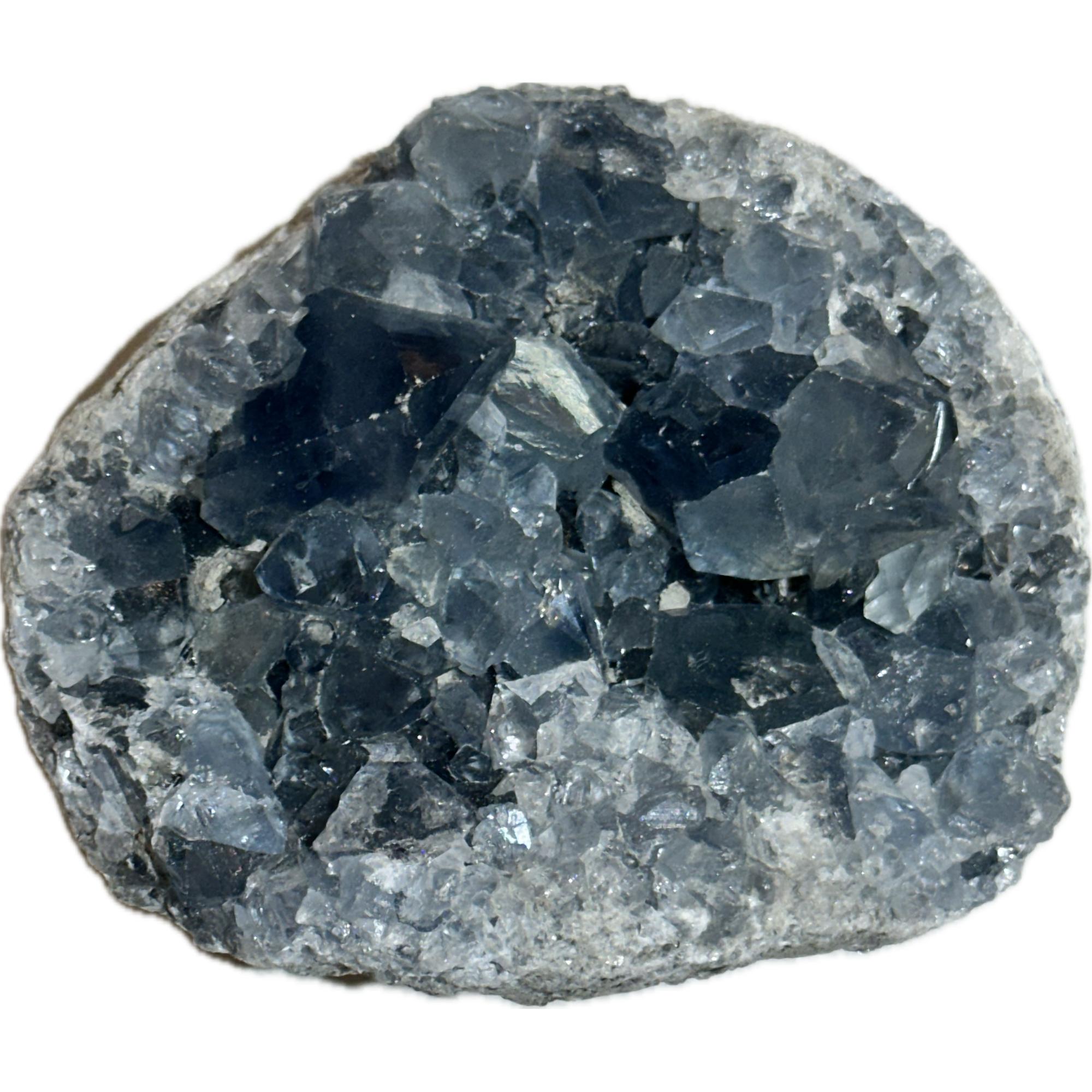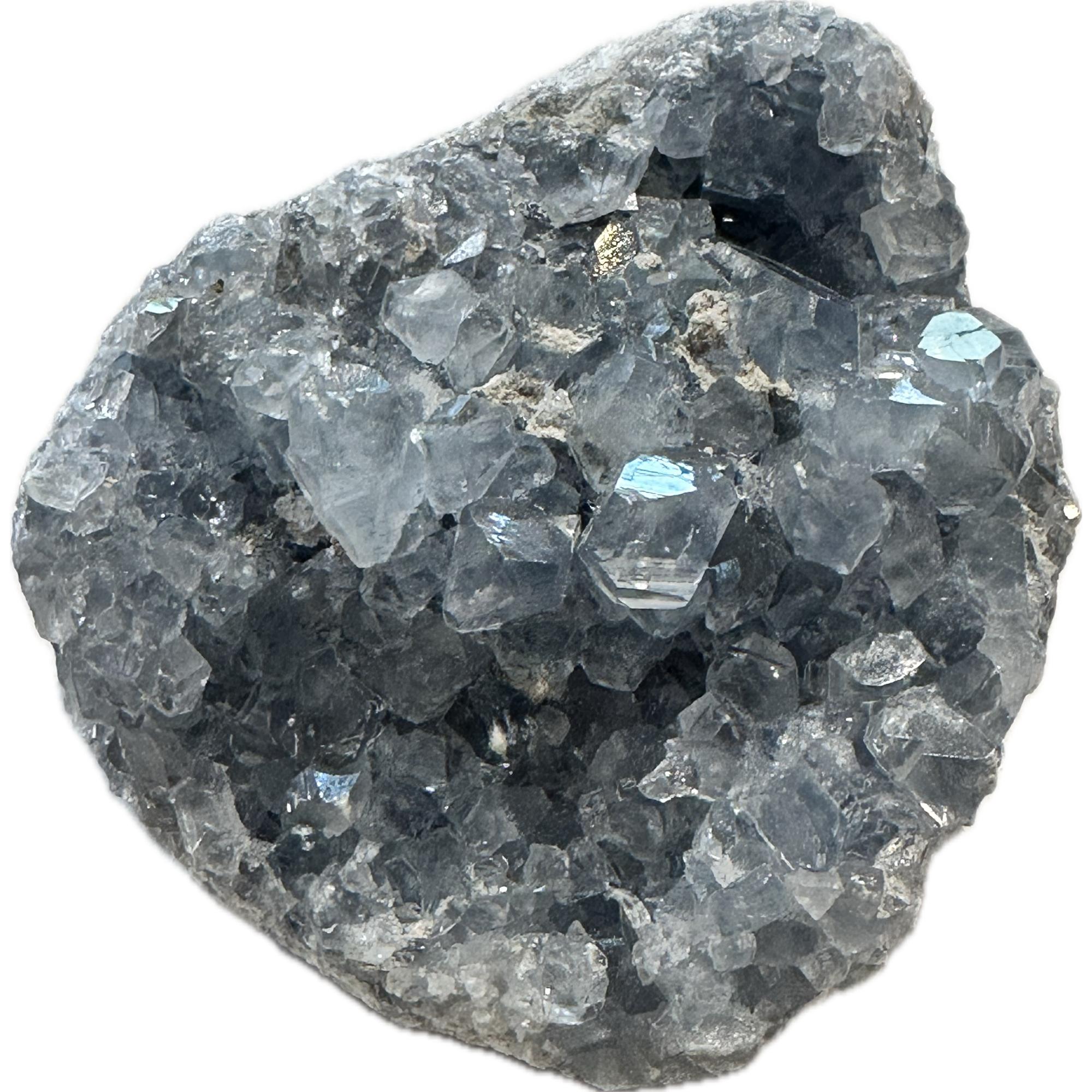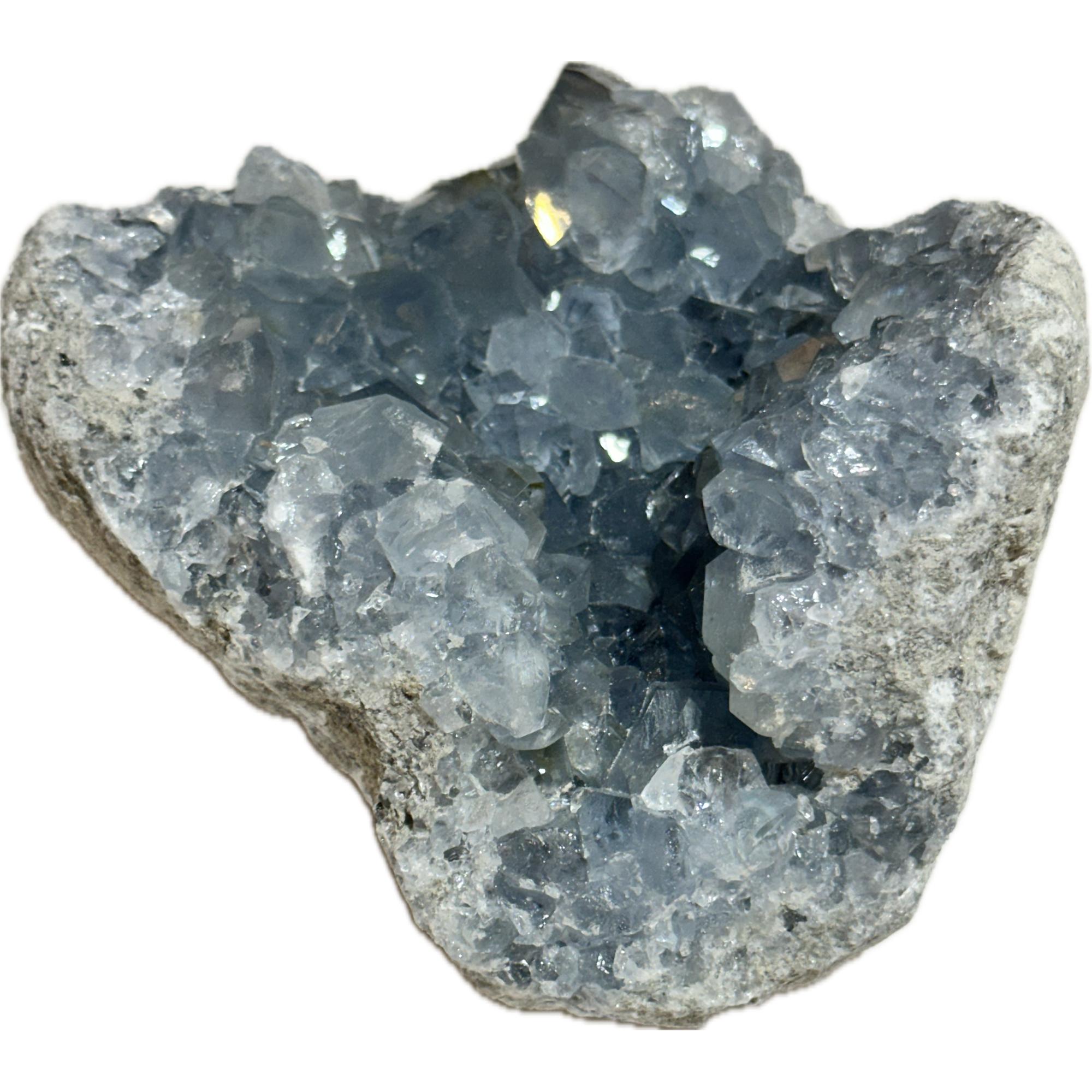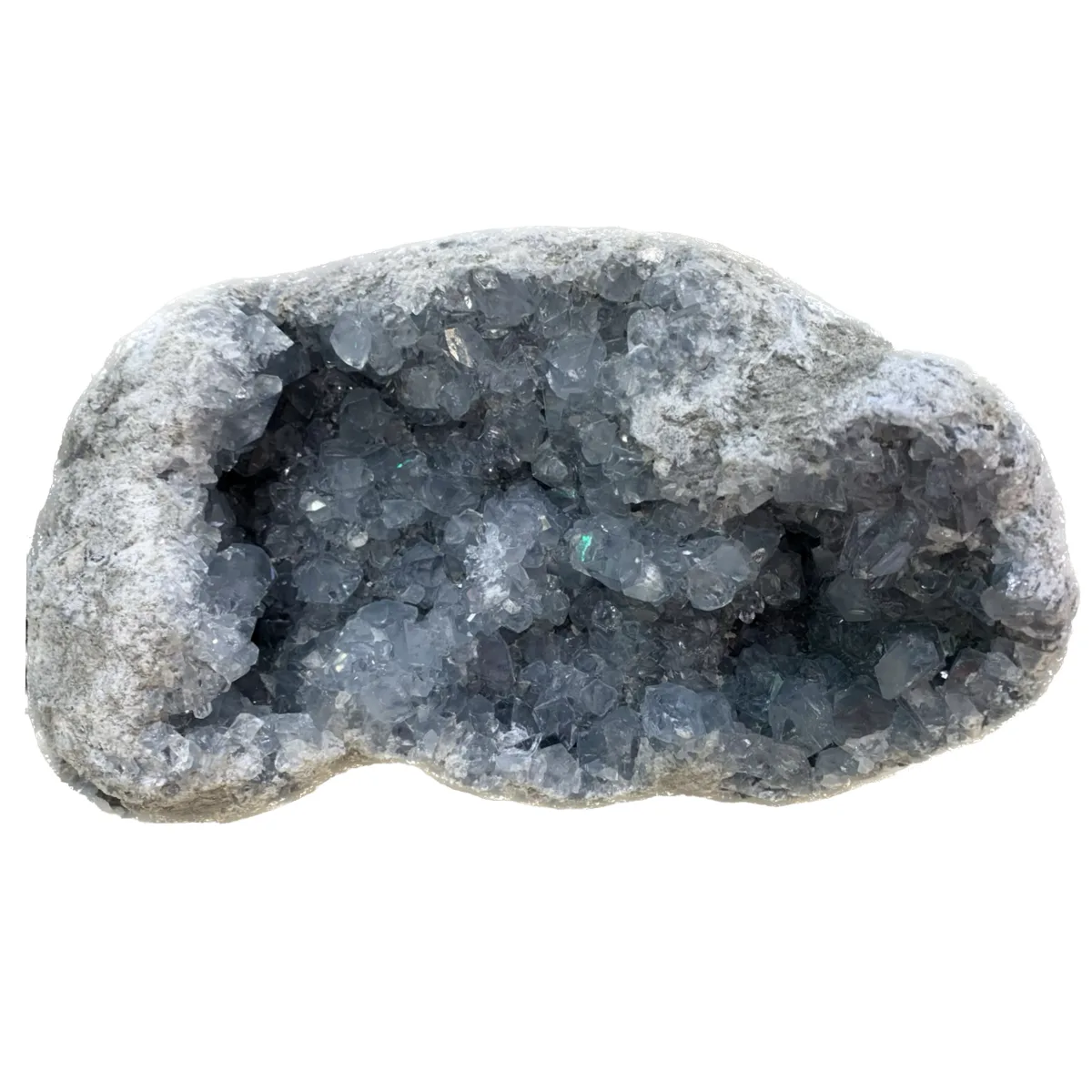Showing all 7 results
Celestine, also known as celestite, is a mineral characterized by its delicate blue color and often occurs in geodes, which are hollow cavities within rocks lined with crystals. Composed primarily of strontium sulfate, its celestial blue hue is one of its most distinctive features, ranging from pale sky blue to deeper shades reminiscent of the sky at dusk.
Geologically, celestine forms in sedimentary rocks, particularly in limestone and dolomite formations, where it precipitates from aqueous solutions rich in strontium. It commonly occurs in association with gypsum, anhydrite, and various carbonate minerals. Celestine crystals can develop in a variety of shapes, including tabular, prismatic, and needle-like formations.
Celestine’s occurrence within geodes adds to its allure. Geodes are created through a combination of volcanic activity, sedimentation, and mineral deposition. As groundwater carrying dissolved minerals seeps into cavities within rocks, it slowly evaporates, allowing minerals like celestine to crystallize and form intricate structures within the geode.
Beyond its geological formation, celestine holds significance in various cultural and spiritual beliefs. Its serene blue color is often associated with tranquility, spirituality, and communication with higher realms. Some practitioners of crystal healing believe that celestine can promote inner peace, clarity of mind, and enhanced spiritual awareness.
In addition to its aesthetic and metaphysical properties, celestine has practical applications. It is mined for its strontium content, which is used in the manufacturing of fireworks, flares, and various pyrotechnic applications. Additionally, celestine is used as a source of strontium in the production of glass and ceramics, where it acts as a flux to improve strength and durability.

